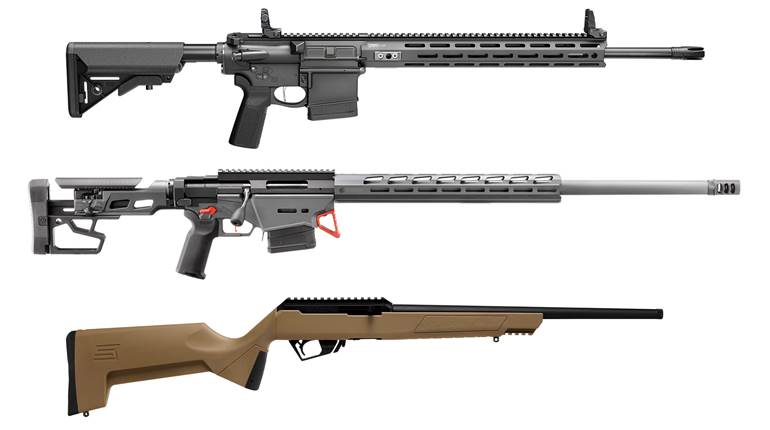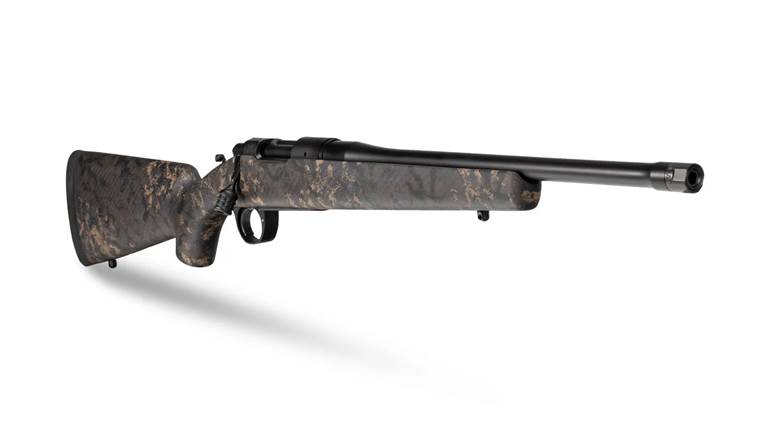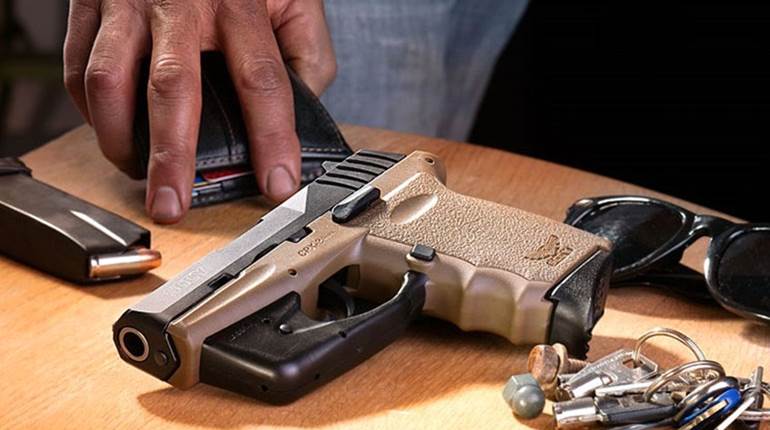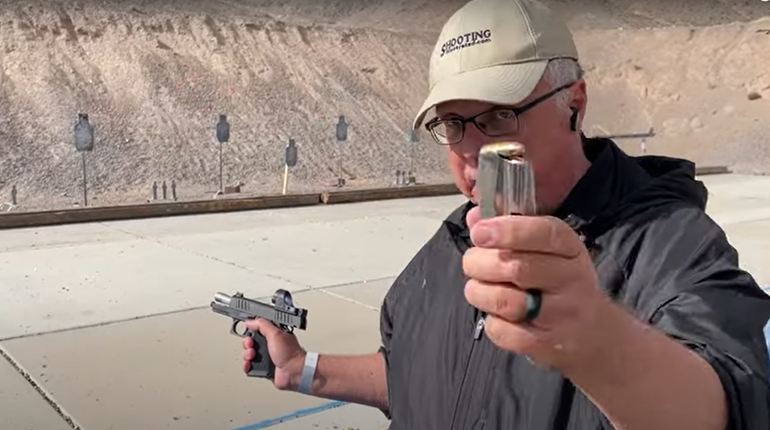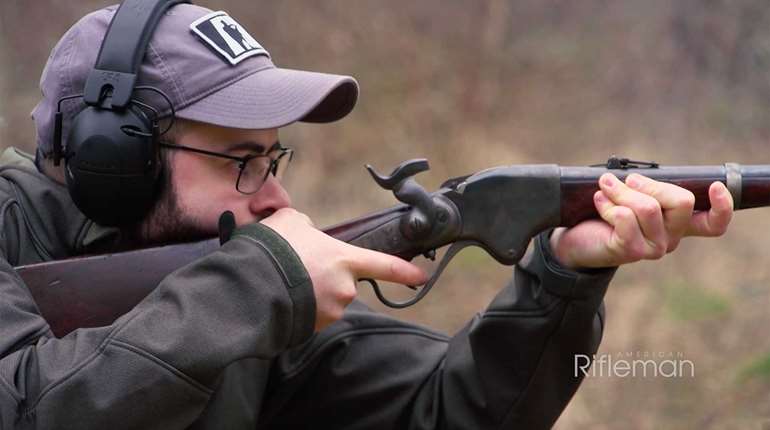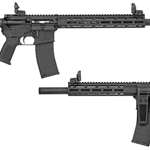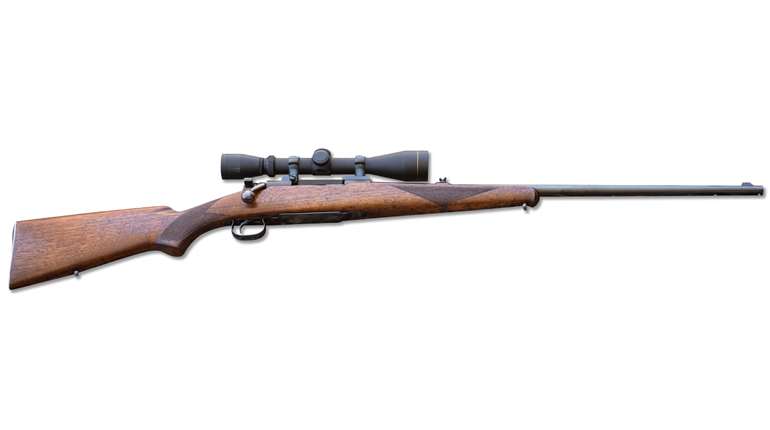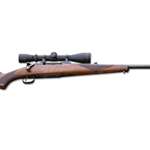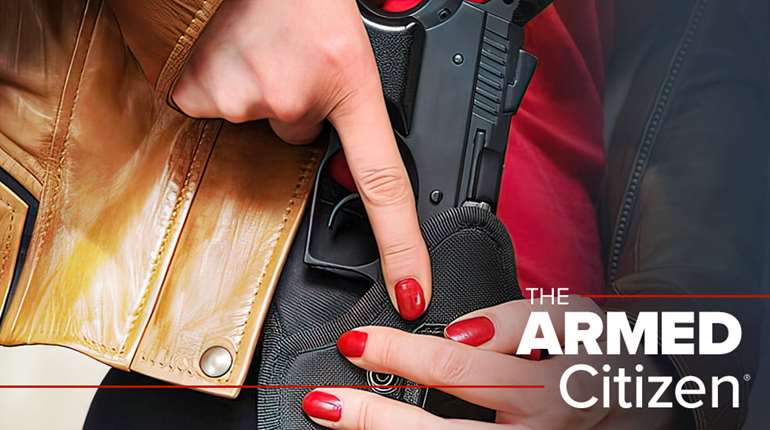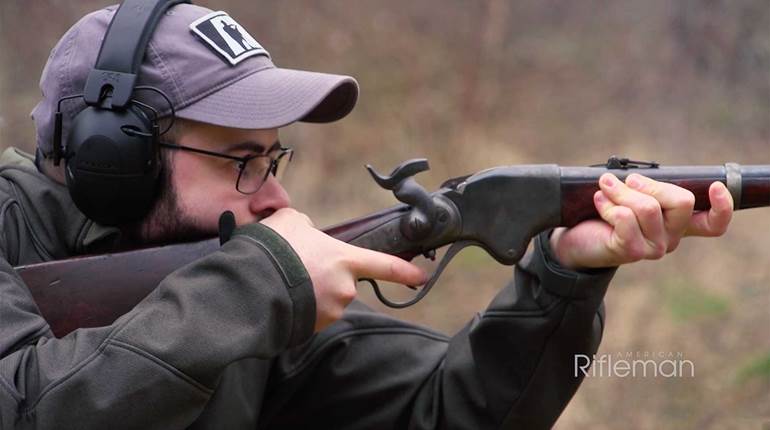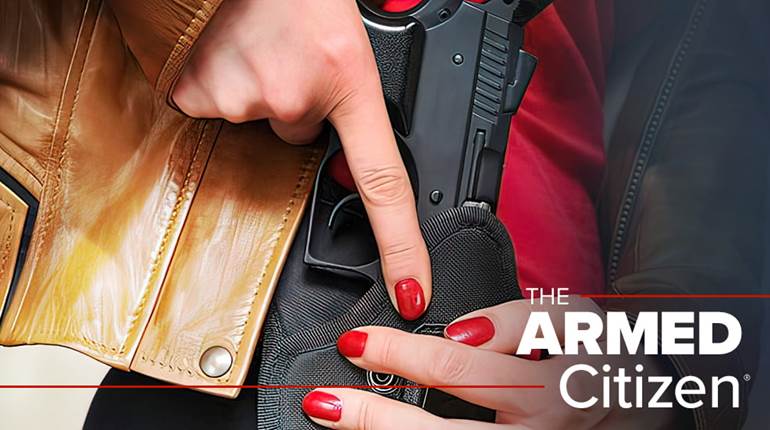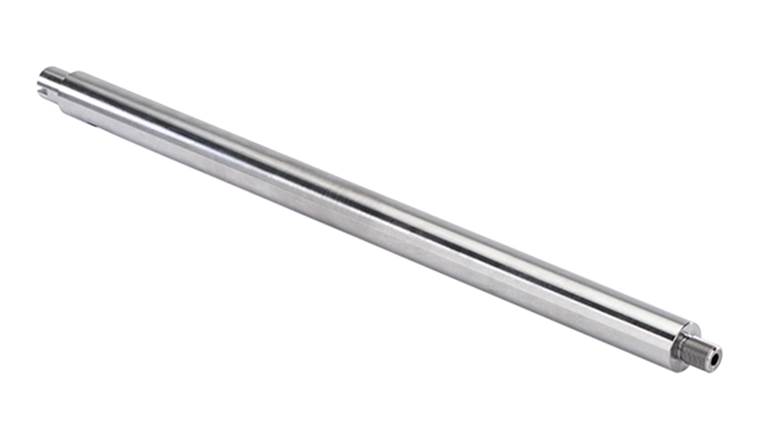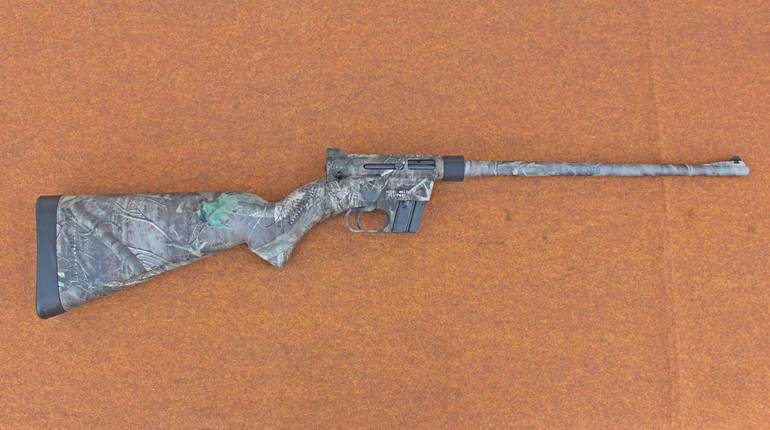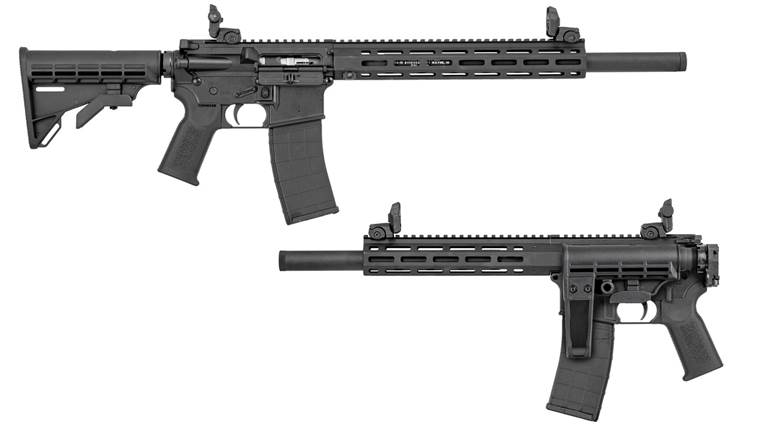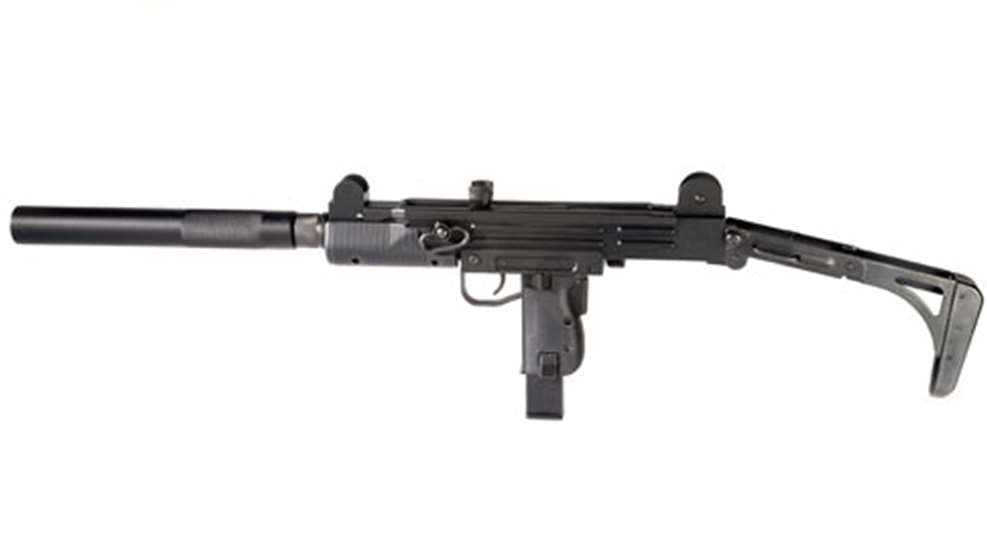
12/21/2012
The Uzi submachine gun is one of the most iconic firearms of the 20th century. Semi-automatic-only carbines, firing from a closed bolt and chambered in 9 mm Luger, were imported beginning in 1981, but ceased altogether with the 1989 executive import ban. Now guns bearing the Uzi trademark are back, this time as semi-automatic-only carbines—and pistols—chambered in .22 Long Rifle.
Made under license from Israel Weapon Industries, the Uzi Rifle is a straight blowback-operated rimfire designed and manufactured by Carl Walther in Germany and imported by its subsidiary Umarex USA of Fort Smith, Ark. It mimics the lines and weight of the gun designed by Uziel Gal, but is completely different in its construction. Where the original’s receiver was made of steel stampings, the Walther-made gun makes use of precision aluminum castings.
Like previous guns reviewed here made by Walther/Umarex, such as the H&K MP522 and Colt .22, the Uzi is a blend of materials, polymer for the pistol grip and integral trigger guard, steel for the barrel sleeve and buttstock, then beefy aluminum castings for the majority of the receiver. The well-mated receiver halves are held together by two large screws, whose recesses also serve as quick-connect points for the rotating sling swivel.
The non-reciprocating charging handle is on the receiver’s top. Its sides are knurled and its center is notched to allow viewing of the front sight. The top cover is removed after depressing its release at the base of the rear sight.
Underneath its cosmetic black polymer cover is the bolt, which has a steel lower portion with two lugs on either side that mate with guide rails in the receiver’s interior. Pinned to the lower bolt is a die-cast assembly that adds weight and has a circular recess that guides the bolt’s travel along the recoil spring guide rod. The coil recoil spring behind the bolt is retained at its rear by a back plate. There is also a buffer at the bolt’s rear.
On the bolt face, a small lug at the 6 o’clock position engages a recess cut for it on the top of the feed ramp, which is steel integral with the barrel. A spring-loaded hook extractor is at the 10 o’clock position when viewed from the front. Ejection is via a blade attached to the die-cast, fire-control unit that mates between the two receiver halves.
The two-position manual safety is on the top of polymer pistol grip’s left, and pressing its polymer button rearward to the “S” position blocks the trigger. There is also a grip safety on the pistol grip’s rear, which must be fully depressed for the gun to fire.
The under-folding, steel stock operates like the original. When in the closed position, simply grasp the buttplate and pull it down and to the rear. That frees the stock from its lug directly behind the pistol grip and allows it to fully extend and lock open. To close the stock, squeeze the right side of rearmost stock arm and flip the rear portion up while depressing the release on the receiver’s left rear. Overall length with the stock folded is 26 1/4 inches.
Unlike the Models A and B center-fire Carbines, which had 16.1-inch barrels, the .22 Long Rifle has a 18-inch long barrel that is surrounded by an 1 1/2-inch-diameter steel shroud that is made to look like a suppressor, though it is non-functional. The barrel itself is a mere 5/8" in diameter, and ends in a square-shaped breech held between the two receiver halves. The forward 12 1/2 inches of barrel is stiffened by the faux suppressor. The extra barrel length was necessary to comply with federal law that dictates that a rifle’s overall length must be at least 26 inches with the stock folded.
Sights, too, are faithful to the original. Protected by sight ears front and back, the rear is a two-position aperture flip, while the front is a post. Elevation adjustments are made by depressing the detent adjacent to the front post and turning it up or down. While a faux windage knob is on the rear sight protector’s right, actual adjustments are made by a screw on the left rear sight ear. Also, under the polymer two-piece handguard, a strip of Picatinny rail is cast into the carbine’s front, allowing the mounting of lasers, lights or other accessories.
Magazine removal is via the release on the pistol grip’s right side. Depressing its bottom allows the firer to rip the magazine down and out of the gun; magazines do not drop free from their own weight. Made entirely of polymer save for its magazine spring, the 20-round-capacity, detachable box magazine mimics the lines of the original, but has a thumb latch for the follower on its right side.
The Uzi Rifle was evaluated for accuracy at 50 yards with three different loads from CCI, Remington and Winchester. For function firing, more than 1,500 rounds of Federal and Winchester bulk ammunition were fired, as was an impressive pile of partial boxes of .22 left in the ammunition cabinet. With the exception of subsonic rounds not meant for semi-automatics, and three failures to fire with some ancient Winchester Wildcat (an ammunition issue and not the gun’s fault) the Uzi digested and fired everything we tried. The firing pin hits were solid, and the gun continued to fire reliably, even when heavily fouled. Accuracy was impressive considering the use of iron sights and a Laserlyte Center Mass laser as scope mounting options for an Uzi are limited.
The Uzi Rifle is pricey at a suggested retail of $645, but can provide hours and hours of range time at mere pennies a round.
Manufacturer: Carl Walther, Germany
Importer: Umarex USA, Inc.; (479) 646-4210; www.umarexusa.com
Chambering: .22 Long Rifle
Receiver: aluminum
Barrel: 18"
Rifling: six-groove, 1:133⁄4" RH twist
Magazine: 20-round detachable box, load-assist button
Sights: elevation-adjustable post front, windage-adjustable two-position aperture rear
Trigger: single-stage; 7-lb., 8.5-oz. pull
Stock: steel, folding: length of pull, 157⁄8"; drop at heel, 31⁄8"; drop at comb, 23⁄8"
Overall Length: 26¼" or 333⁄8"
Weight: 8 lbs., 1 oz.
Accessories: spare magazine, owner’s manual
Suggested Retail Price: $645












